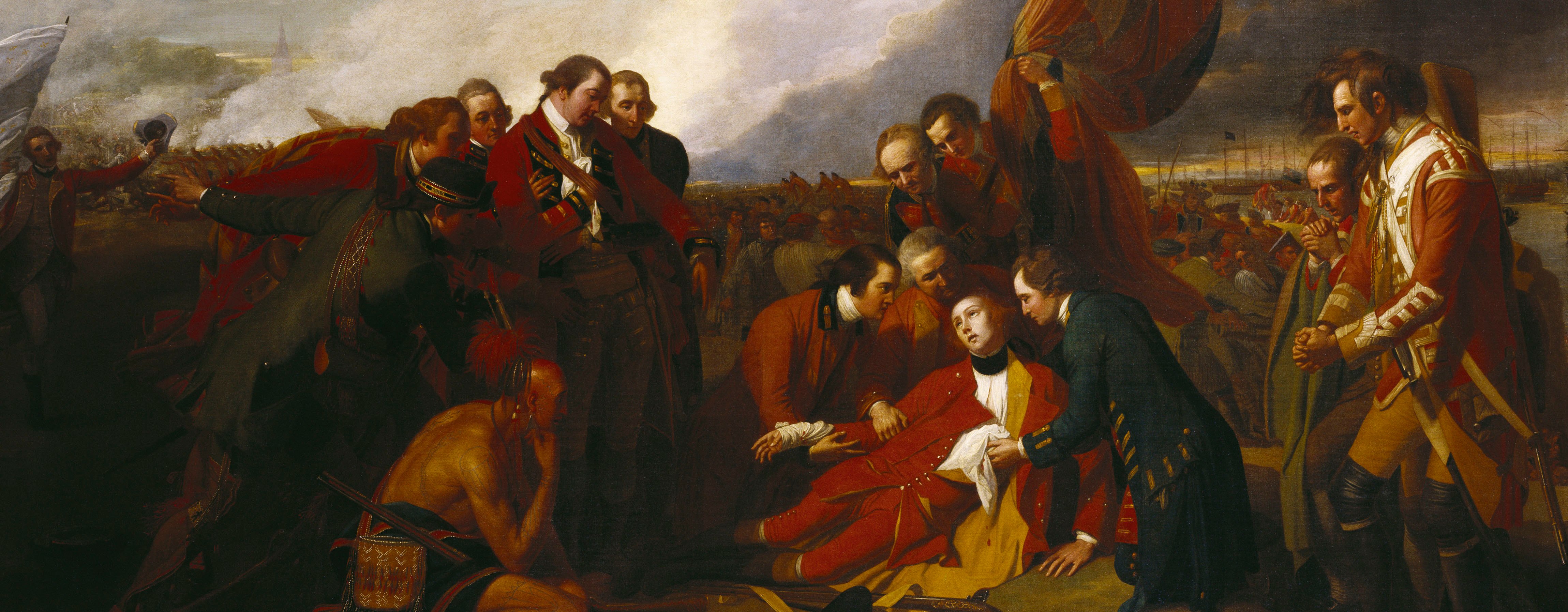
Manuscript and printed maps and views, correspondence and journals from the first global war
Map of Monongahela River, 1755 (Pennsylvania, USA)
c.1755Pen, ink and watercolour on paper | Scale: 1:249,500 | RCIN 731062
A map of the march of the British army from Fort Cumberland to the field of battle near the Monongahela River, 1755. French and Indian War (1754-63). Oriented with north-east to top (cardinal points).
The attribution to Patrick Mackellar is made on stylistic grounds. Mackellar was an engineer on this expedition and was severely wounded at the Battle of Monongahela on 9 July 1755. The extract from the journal shows that the route from Fort Cumberland (39°39'03"N 78°45'55"W) to the field of battle (shown by crossed swords east of Fort Duquesne) covered 113½ miles. Nineteen camp sites are marked and named along the route. The text is tabulated under the following headings: Names of the Encampments; Dist.s Miles; Work done to the Road; Quality of the Road; Quality of the Camp. The journey took twenty-nine days, ten of which were halt days.
The 'Mr Gist' referred to by Mackellar in the title was Christopher Gist, surveyor and guide to George Washington, who prepared the first official map of the British army's route and encampments. For a discussion of the mapping of this campaign see Baker (2011).
? Patrick Mackellar (1717-78) (surveyor, draughtsman and compiler)
Subject(s)
Army-GBArmy-USA-American Colonial forcesMajor-General Edward Braddock (1695-1755)Watermark: Fleur-de-lys in crowned shield, a '4' suspending the letters L V G below; countermark: I H S [with cross] above I VILLEDARY
Mark, stamped: 774
Condition: one fold line; slight surface dirt; slight foxing; laid down on linen. Verso: surface dirt; induced discolouration
Scale: 1:249,500. Scale bar: SCALE of computed English Miles [352 mm =] 50.
29.6 x 67.3 cm (neatline)
48.1 x 67.9 cm (image)
48.2 x 67.9 cm (sheet)
Manuscript title:
A SKETCH of General Braddock’s March from Fort Cumberland on the 10.th of June 1755 to the Field of Battle of the 9.th July near the River MONONGAHELA, with an Abstract of a Journal shewing the Quality of the Road and of the several Encampments &.ca [Across top of map, in rectangular panel]
Additional text:
[top, below title:] N.B. The Courses of the Waters are taken from a sketch of M.r Gist’s. The Road being full of short windings, the different Bearings of it cou’d not be express’d, but the general Bearings are pretty just. The mountainous Ridges are express’d in cavalier perspective, and the hard pinch’s of / Hills in Plan. The Springs are express’d with a Dot in water colour. [Bottom, below map:] ABSTRACT of a JOURNAL &ca [comprising six columns headed:] Names of the Encampments; Dist.s Miles; Work done to the Road; Quality of the Road; Quality of the Camp; Days halted.
Annotations:
George III heading: March from Fort Cumberland to the Monongahela River 10 June - 9 July 1755.
Other annotations: (Recto) none. (Verso) [top, right of centre, obscured by white paper strip:] March Route.
George III catalogue entry:
March A drawn Plan of General Braddock’s March from Fort Cumberland on the 10.th of June to the field of Battle on the 9th of July 1755 near the River Monongahela, with an abstract of a Journal shewing the quality of the Road and the several Encampments. [The same entry appears under the headings Cumberland, Fort and Monongahela.]
Subject(s)
Pennsylvania [USA]
Page revisions
3 November 2024
Current version






